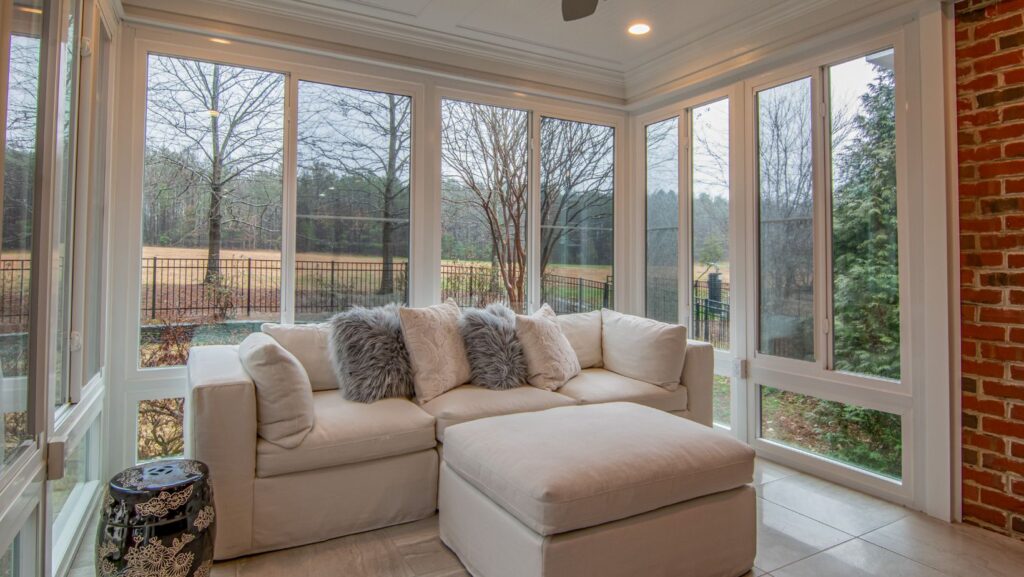Casement windows are a popular choice for homeowners who want both aesthetic appeal and functional design. These side-hinged windows swing outward, much like a door, and offer excellent ventilation and unobstructed views. But their performance depends heavily on the quality and condition of certain key components. If your window is difficult to operate, chances are that some essential casement window parts are worn, damaged, or poorly designed. Let’s explore the five parts that play a vital role in making your casement window easy to open and close.
1. Crank Handle (Operator)
The crank handle, also known as the operator, is one of the most frequently used casement window parts. It allows the window to open and close through a simple turning motion. High-quality crank handles offer smooth, low-resistance movement and reduce the effort required to operate the sash.
If your crank feels stiff, skips teeth, or doesn’t move the window properly, it may be time to replace this essential component. Choosing a crank made of stainless steel or corrosion-resistant materials ensures longevity and ease of use, especially in areas exposed to humidity or weather extremes. A well-functioning crank is key to an effortless user experience.
2. Hinge System
Hinges are the unsung heroes of casement window parts. These components support the window sash and control the swinging motion. Without reliable hinges, your window can become misaligned, difficult to close, or even dangerous to operate.
Casement window hinges come in various grades, with heavy-duty options providing more stability for larger or heavier sashes. Precision-engineered hinges reduce friction and ensure the window opens and closes smoothly. Routine inspection and occasional lubrication can extend the life of your hinges and enhance the overall window operation.
3. Locking Mechanism (Multipoint Lock)
Security and smooth functionality often go hand in hand, especially when it comes to the locking system. Modern casement windows typically feature multipoint locks — an upgrade from the traditional single-point lock. These advanced casement window parts not only improve security but also help the window close more evenly and with less resistance.
Multipoint locks engage at several spots along the sash and frame, reducing warping and ensuring a tighter seal. This design also improves insulation by minimizing drafts. If locking or unlocking your casement window requires too much force, it could signal a problem with the locking mechanism.
4. Friction Stay or Support Arm
Another important yet overlooked part is the friction stay or support arm. These casement window parts keep the sash open at a set position without slamming shut due to wind. They also provide stability while the window is in use, especially when it’s fully extended.

A worn or rusted friction stay can result in windows that drift closed or feel unstable when opened. Replacing this part with a durable, stainless-steel alternative can greatly improve the feel and control of your window operation. It’s a small but mighty piece of hardware that enhances safety and usability.
5. Weatherstripping and Seals
While not mechanical, weatherstripping and seals are crucial casement window parts that affect how easily your window closes. Over time, these materials can compress, tear, or degrade, causing friction and preventing a proper seal. This not only affects energy efficiency but also increases the effort required to close the window.
High-quality weatherstripping ensures the sash glides into place and forms a tight seal without needing to be forced. Replacing old seals with new, properly fitted ones can instantly improve both the smoothness of operation and thermal performance.
Keep Your Windows in Top Shape with Regular Maintenance
To keep your casement window parts functioning at their best, regular maintenance is key. Start by cleaning debris from tracks and hinges. Lubricate moving parts like the crank and hinges with silicone spray, and periodically inspect the locking mechanism for wear.
Pay close attention to how your window feels during operation. If it sticks, creaks, or resists movement, one or more of these critical parts may need servicing or replacement. Maintaining your windows ensures they stay easy to use, energy-efficient, and secure.
Choosing Quality Casement Window Parts Matters
When it’s time to repair or upgrade, always choose high-quality casement window parts. Low-grade hardware might save money upfront, but it usually wears out faster and affects performance. Look for parts made from stainless steel or brass, and consider consulting a window professional if you’re unsure what your specific model needs.
Installing premium casement window parts can make a dramatic difference in how your windows function and feel. Whether you’re doing a full renovation or simply replacing a worn crank handle, investing in the right parts is always worth it.
Enjoy Effortless Window Operation Every Day
Casement windows should open and close with ease, providing comfort, security, and energy efficiency without hassle. By understanding and maintaining the five essential casement window parts—the crank handle, hinge system, locking mechanism, friction stay, and weatherstripping—you can keep your windows performing their best for years to come.
Take the time to inspect your current hardware and invest in the proper replacements if needed. With the right parts and a bit of upkeep, your casement windows can deliver smooth, reliable operation every time.
